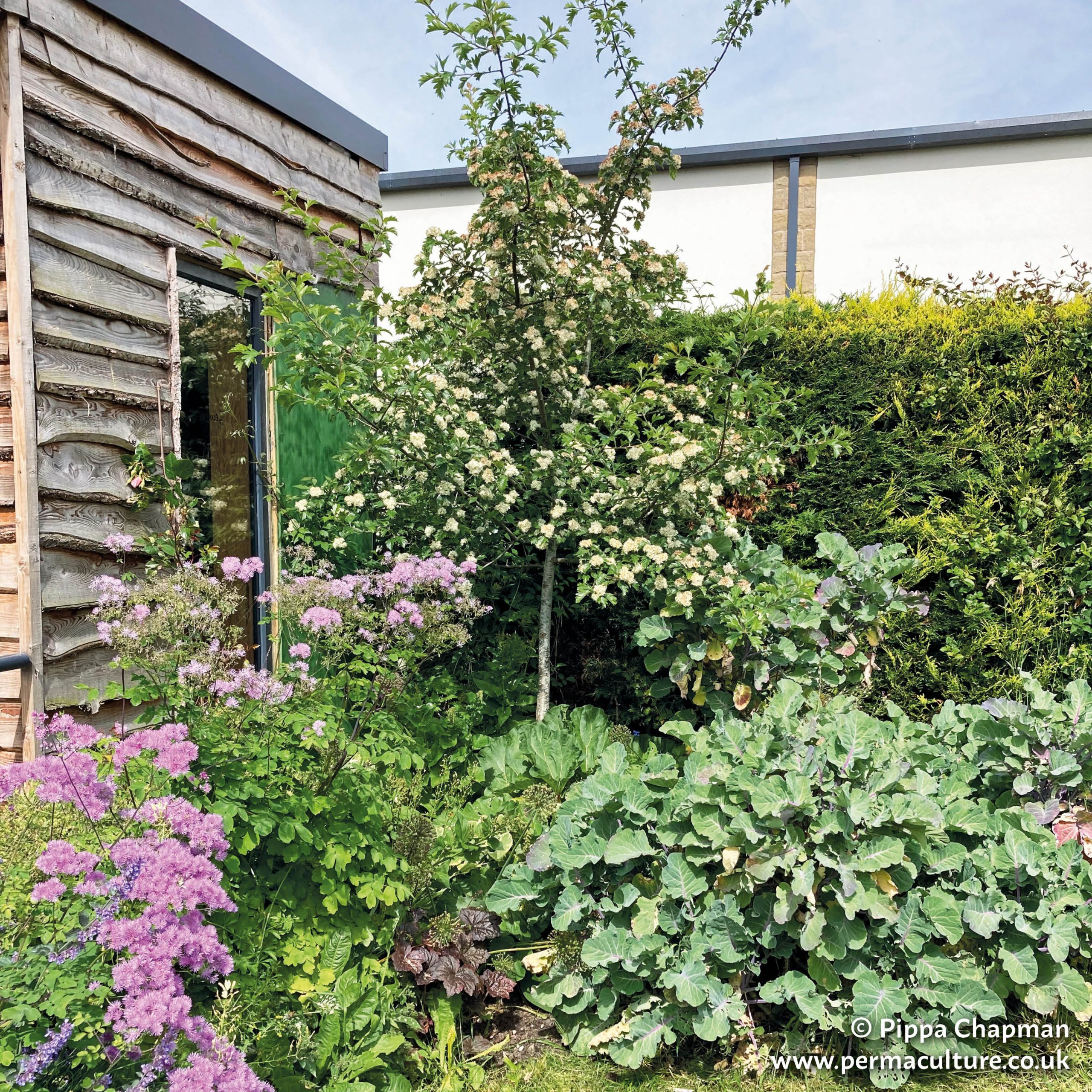A great many forest gardens have sprung up over the last couple of decades. People have developed the concept in all kinds of directions, exploring their potential for production, wellbeing, learning and ecological restoration. This book showcases one of the most promising developments.
Given the great diversity present in forest gardens and the fact that practically every plant has a medicinal value, the medicinal forest garden idea seems a natural fit that should appeal to home gardeners, medicinal herbalists and professional growers alike.
Anne Stobart is well placed to explore this exciting concept, having developed her own site and business – Holt Wood Herbs in Devon – in this way since 2004, together with her partner. This book is the distillation of her extensive research and practice over the years.
The book comes in two parts – a general introduction to the subjects followed by a detailed presentation of 40 medicinal shrubs and trees. The first section covers a wide range of topics. As the book amalgamates two disciplines that are both vast in their own right, it starts off by briefly introducing the principles of both forest gardening and herbal medicine. This is followed by a deeper look at relevant subjects, from designing and planting a forest garden, harvesting plants and using them for their beneficial effects, sourcing plants and making your own. The physical and mental health benefits derived from gentle activity in the open air, in direct contact with plants (what Robert Hart called ‘purposeful meditative gardening’) are also explored. Another intriguing concept is overlaying the conditions in the ecology around us with that inside our own bodies, leading to suggested guilds for specific health issues or body systems.
The specific advice in Section 1 is largely based on Anne’s experience at Holt Wood Herbs, where she and her partner converted a conifer plantation into a forest garden. Most people will work in different settings to that, but the general principles covered in the book are universal. Brief case studies mainly from the UK and US help to broaden the reader’s horizon by showing some of the diversity of forest garden settings. The book also discusses the relative merits of wild harvesting, forest gardening, agroforestry and farm woodlands in producing medicinal plants.
The detailed directory of plants restricts itself to 40 trees and shrubs suitable for a wide range of sites and addressing many conditions. While it is not intended to replace an in-depth medicinal herbal directory, it is a great introduction to the subject for beginners. For experienced herbalists, the book opens up the possibility to develop their own living pharmacy.
Anne wisely decides to leave out some of the finer detail on forest gardening and herbal medicine which is already amply covered by other authors. Nevertheless her deep knowledge comes through in the writing and the book is immensely practical. As a serial forest gardener and amateur herbalist, I look forward to using this book as a frequent source of reference.
Tomas Remiarz has been involved in creating and maintaining forest gardens across the UK and Europe for nearly 20 years.




